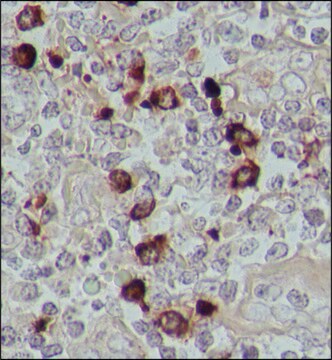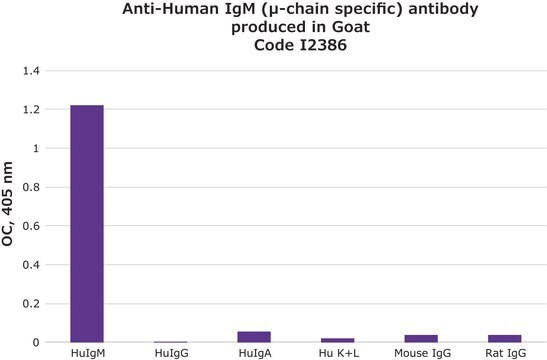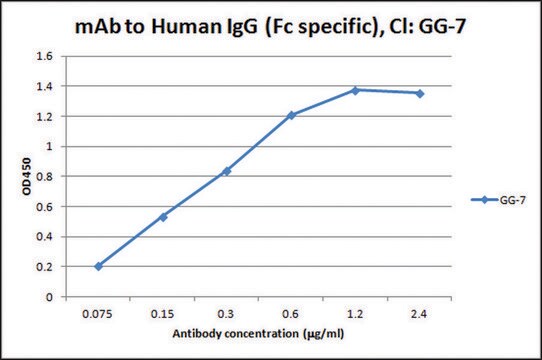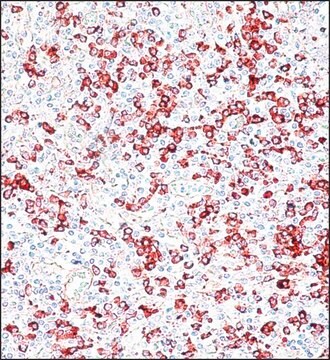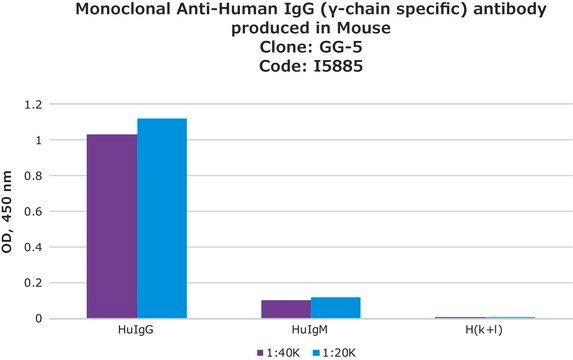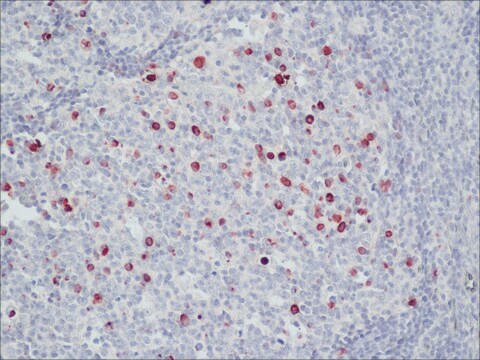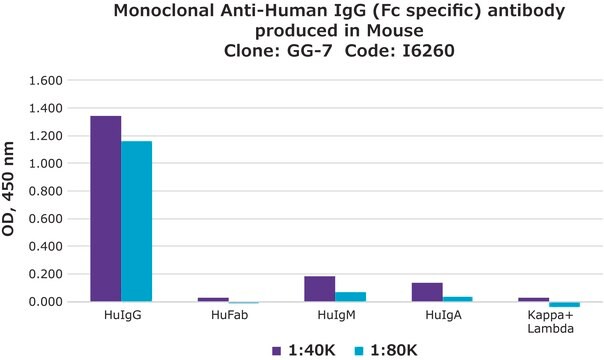SAB4200713
Anti-Human IgG (γ-chain specific) antibody, Mouse monoclonal
clone GG-5, purified from hybridoma cell culture
Synonym(s):
Mouse Anti-Human IgG (γ-chain specific)
About This Item
Recommended Products
antibody form
purified from hybridoma cell culture
Quality Level
antibody product type
primary antibodies
clone
GG-5, monoclonal
form
buffered aqueous solution
species reactivity
human
concentration
~1 mg/mL
technique(s)
indirect ELISA: 0.25-0.5 μg/mL using 5μg/mL human IgG for coating
isotype
IgG1
shipped in
dry ice
storage temp.
−20°C
target post-translational modification
unmodified
General description
Immunogen
Application
Biochem/physiol Actions
Physical form
Disclaimer
Not finding the right product?
Try our Product Selector Tool.
Storage Class Code
10 - Combustible liquids
Flash Point(F)
Not applicable
Flash Point(C)
Not applicable
Certificates of Analysis (COA)
Search for Certificates of Analysis (COA) by entering the products Lot/Batch Number. Lot and Batch Numbers can be found on a product’s label following the words ‘Lot’ or ‘Batch’.
Already Own This Product?
Find documentation for the products that you have recently purchased in the Document Library.
Customers Also Viewed
Our team of scientists has experience in all areas of research including Life Science, Material Science, Chemical Synthesis, Chromatography, Analytical and many others.
Contact Technical Service
